Peter Ireland – 11 June, 2013
For all its quality, though, the show never quite escapes the unadventurous flirtation it offers rather than a more challenging and visceral response to the issues it attempts to confront. All the boxes get ticked on the popular culture front: youth, beauty, fashion, money, sexual posing and the rest, but intellectual stimulation isn't necessarily engagement.
Wellington
Jack Smith, Bill Henson & Jacqueline Fraser
Beautiful Creatures
Curated by Christina Barton
3 May - 7 July 2013
Categories are a sorting device tending to take on lives of their own, so that ideas such as nature and culture seem to have some sort of existence “out there” independent of cranial activity. Culture lurks at home whereas nature’s outside somewhere doing unaccountably whatever it does in the bush. Categories also tend to demarcate differences rather than similarities - ipso facto, you might say - so that in a time such as ours when the boundaries of all sorts of categories seem to be dissolving, the distinction between, say, marriage and relationships starts getting pretty blurry.
Beautiful Creatures presents an increasing blurry line between art and pornography. Of course, there are all the usual phrases associated with the show that soften this rather brutal fact and flirt with its implications: “jubilant celebration of carnal fantasy”, “joyously erotic tableaux”, “goings-on never made explicit”, “legendary beauty” and even “incandescent casualties”, but any of them could be applied, unblushingly, to either category. But it’s the Adam Art Gallery, not Vivian Street, and - as they say - context is everything. One of the questions this show poses, perhaps unintentionally, is to what degree is the curiosity, or even need, being met by an art show in Kelburn different from the curiosity and need being met by the porn shops in Te Aro? As a politician might say “That’s a very good question”. But whatever the answer, the boundaries art has attempted to assault and extend since modernism still exist socially in the templates of town planning. Ennobling art on the hill: degrading porn on the flat.
Modernism’s values of honesty of purpose, abstract ideas, truth to materials etc looked askance at anything tainted by excess, which amounted to a kind of puritanism. Hans Bellmer was a disconcerting exception perhaps, but the erotic had a long hibernation between Renoir and Wesselmann. At least publicly, which in itself reveals just what a joyless police state modernism could be. (Photography’s the exception in this long sleep, but that’s another story entirely.) And despite postmodernism’s much broader context and claims for inclusiveness, art’s gate-keepers are still of a generation schooled by modernist prescriptions, so that there remains a determining respect for the dictates of those organs above the neck.
The reasons are complex historically, but New Zealand too has a strong streak of puritanism. We can produce a Jane Campion but it’ll be a while before there’s any Pedro Almodovar. (David Blyth’s 1978 Angel Mine had a stab at it, but it was a beginning that went nowhere.) Some local historical account of Beautiful Creatures‘ “jubilant celebration of carnal fantasy” et al is at least unthinkable and certainly laughable. The tiny handful of images so gathered would be riven by joylessness, anxiety and guilt - a Courbet’s Origin of the world would be wearing Mabel Howard’s bloomers. That an artist here such as Helm Ruifrok remains virtually unknown after forty years of solid production is proof enough of this (admittedly simplistic) thesis.
Beautiful Creatures‘ geographic context may be Kelburn, but its social context is this long tradition of deep uneasiness about such subject matter, even if - temptation being what it is - this discomfiture does not, ahem, exclude a persistent attraction. In presenting this show, curator Barton may be relying on the old-fashioned notion of universities being sites for new ideas, open discussion and stout defence of core liberal values, and hoping, perhaps, that despite this show’s relative modesty it may help roll back the puritan tide. Naturally, its biggest audience is likely to be Victoria’s students, a group conspicuous for its youth and intelligence, conditions conducive to a greater acceptance of liberal attitudes - not getting too utopian for you? - so in terms of timing and location this exhibition could be just what the doctor ordered. If attitudes having ossified into a tradition are ever going to change, the young and bright will be its likely movers.
The line between art and porn may be blurry but it’s still a line. On one side you have a socially acceptable practice with all the trappings of tradition and status. It’s taught in schools. On the other you have a frowned-on tradition blurrier than our line, but which has, demonstrably, one of the highest profiles on the internet. It’s not taught in schools. (You can see the pursed lips forming the word “inappropriate” from here.) Art’s deep and age-long fascination with sex as content is tautly controlled by the framing device of form, having the same moderating effect as rods in a nuclear reactor. Porn’s sex as content, by contrast, is a dog’s breakfast - messy, formless and occasionally as formulaic as late abstract expressionism. There’s a middle ground, though, in the areas of fashion and design that mediums such as film and photography seem increasingly drawn to, as if instinctively responding to often staid art’s need to be refreshed by more lively popular culture. A bit like the Windsor-Middleton wedding, let’s say. And in that scenario the real may be represented by an elderly monarch, inescapably, but the much more engaging ideal is represented by the youth and beauty of the couple emerging from St Paul’s.
And youth and beauty is where the latest Adam show comes in. The year 1962 would seem to be its godfather, the year Jack Smith released his film Flaming Creatures and his publication The Beautiful Book. And the early ‘60s were the most vigorous years of the Pop movement, when the high-mindedness of modernism finally succumbed to the attractions of popular culture, when “lesser” practices such as film, photography, fashion and design coupled with the youth wave and a new permissiveness. Warhol may get the credit for being a central figure here, but Jack Smith seems to have put in most of the leg-work. The 42-minute Flaming Creatures may be dramatically theatrical in a fin de siècle sort of way - it’s as if Fred Holland Day conspired with an unlikely Julia Margaret Cameron to organise an orgy - but it’s clearly a precursor for the films made soon after by Paul Morrissey but Warhol’s name is more likely to be associated with them. As sexually explicit but much less theatrical, these pioneering films instead make a virtue out of boredom, reinforced by their being made in “real time”. As Virginia Woolf remarked of D H Lawrence, there are some great moments but some awfully tedious half-hours.
The Adam’s Beautiful Creatures‘ promotional material observes rather chastely of the three artists: “Each treats the youthful body as a form of aesthetic material, creating striking tableaux that connect with the viewer expressly through the effect of the visual. Updating and complicating the freighted history of the figure in art, these artists exploit the material and structural qualities of their media. They immerse the viewer in a seductive atmospheric, to both animate desire and hint at the larger forces within which visual pleasure operates”. OK, even allowing for art history’s need to be considered a credible discipline and its consequent reliance on a seeming objectivity, this statement is bizarrely at right angles to what these artists are actually doing. We’re dealing with Jack Smith not Barnett Newman, and one could imagine Smith, were he still alive, compelled to send up such a statement, if only for its being on the wrong side of 1962. The idea of art earnestly “animating desire” would have spurred him to action, properly creating something still likely to be banned. And to that prim “freighted history of the figure in art” one can only reply “Yeah, right”. It’s like saying “In Germany between 1939 and 1945 there were some interruptions to essential services”. But at least the Adam’s inanimate language spares us any more sermons about voyeurism.
Jargon is always a substitute for thinking. “Complicating” is one of the current buzzwords - it also turns up in the City Gallery’s promotional material for their forthcoming Gregory Crewdson show. Whatever happened to “clarity”? Not enough syllables? The reason why artists such as Smith, Henson, Fraser and Crewdson rise to the top of the murky art pond is precisely because their work comes closest to the light of clarity: they make clear something not clear before. We can safely leave any “complicating” to those students from institutions churning out degrees, maximizing not clarity but profit. In Beautiful Creatures there’s no trace of a smokescreen of words posing as substance.
Darkness may not be very substantial either. Is it just a metaphor for the sometimes powerful fears the fact or idea of darkness of various kinds might provoke in us? Dark is certainly an adjective to be attached to the work of the three artists here, and literally in the case of Bill Henson. His Untitled suite of 15 C-type prints from 1998-2000, a mix of sites and figures (rather than landscapes and portraits) staged at night suggests that the truth of his realism is not a Keatsian beauty but longing. His battered sites and skinny bodies have nothing arcadian about them - their only perfection is in their close fit with contemporary advertising - and the subject matter (such as it is) aligns most closely with the publicity’s “goings-on never made explicit”. Is this flirtation with language matched by any such around Henson’s practice? His work’s aroused the Australian authorities on more than one occasion certainly, so if it’s just flirting with fashion’s current strategies at least the law is taking it seriously. The law also had some serious latter interest in Caravaggio, who wasn’t so much apeing fashion as creating it. His separation of the light from darkness has between hailed as one of the beginnings of Realism, the assumed basis of photography, but it’s an emotional realism rather than anything strictly visual, and it’s here that Henson’s obvious debt to him shines through. Abercrombie & Fitch’s pitch may be about youth and beauty but the beheading of Holofernes isn’t about amputation. (Those “goings-on” were pretty explicit.) Henson’s realism is of a charged, symbolic order, his twinks fumbling in the dark a galaxy away from Burial at Ornans.
Jacqueline Fraser’s presence in this show is in two parts - the first one, 45 framed collages; the second, an installation - and has the most explicit connection with advertising imagery. These sleek, toned and disinterested models have been cut and torn from magazines (suggesting, perhaps, puritan revenge?), and in the collages are part of a larger context of fabrics and other shiny and transparent materials, something of a Fraser signature of late. Collectively they’re titled The Making of American Gangster (2012). The wall label states, in part “It would seem that Fraser seeks to recreate the very conditions within which glamour now operates: as sales tool and fantasy, tied to the consumer dream of perpetual youth, limitless wealth and sexual gratification, which has us all [sic] - rich and poor, trashy and high-brow - in its thrall”. It goes on to say that the work critiques this, and that may be so, but there may be, too, a further connection here to the advertising industry where claims made are not always wholly substantiated by the product in use.
Fraser’s installation, The Making of the Caio Manhattan Tapes (2013) occupies the entire lower floor gallery. It’s large, diverse, noisy, colourful and chaotic. It’s a monument to the erotic in the way that Tatlin’s revolving tower was to the Third International, and, as unbuildable as the artwork’s unknowable. Fraser’s work may be more suggestive than even Tatlin’s, certainly in the sexual sense (allowing for a little oversight regarding phallic penetration of sky) but it’s a rich compost of possibilities, from its taunting of notions of beauty to its replication of youthful hormonal chaos, a dizzying display of componentry that within its apparent randomness has a mesmerizing drive at once exciting and doom-laden. As with Smith and Henson’s work it’s highly theatrical: theirs structured, hers as formless as porn, a porn of consumption, excess and waste, crying out in a pre-echo of Don Giovanni’s frightening descent into Hell. Fraser’s messy tableau serves as a sepulchral monument on which is inscribed “Youth and Beauty”.
Curatorially the show is a bit of a beautiful creature itself. Intelligently constructed, stylishly paced, informative and stimulating, the diverse content playing off one part against the others - some real animation! - further evidence that in the Capital the Adam is ahead of the pack in terms of focus and delivery. It’s relatively easy to import Warhol and Crewdson readymades; quite another to imagine something like Beautiful Creatures then to have the initiative and energy to bring it off. It’s the simple difference between marketing and intelligence.
For all its quality, though, the show never quite escapes the unadventurous flirtation it offers rather than a more challenging and visceral response to the issues it attempts to confront. All the boxes get ticked on the popular culture front: youth, beauty, fashion, money, sexual posing and the rest, but intellectual stimulation isn’t necessarily engagement. None of the three artists involved in Beautiful Creatures is timid, but it’s what you get when such potent matters are treated so tastefully. Miracles happen when water is made into wine. Not the other way round.
Peter Ireland
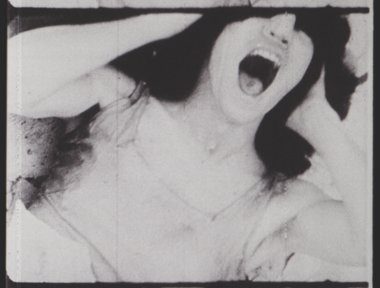
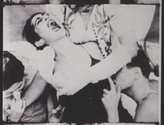
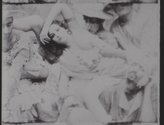
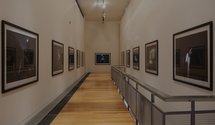
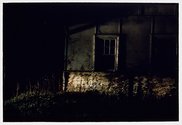
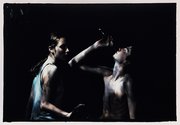
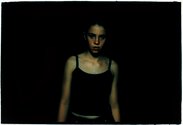
 Advertising in this column
Advertising in this column Two Rooms presents a program of residencies and projects
Two Rooms presents a program of residencies and projects



This Discussion has 0 comments.
Comment
Participate
Register to Participate.
Sign in
Sign in to an existing account.